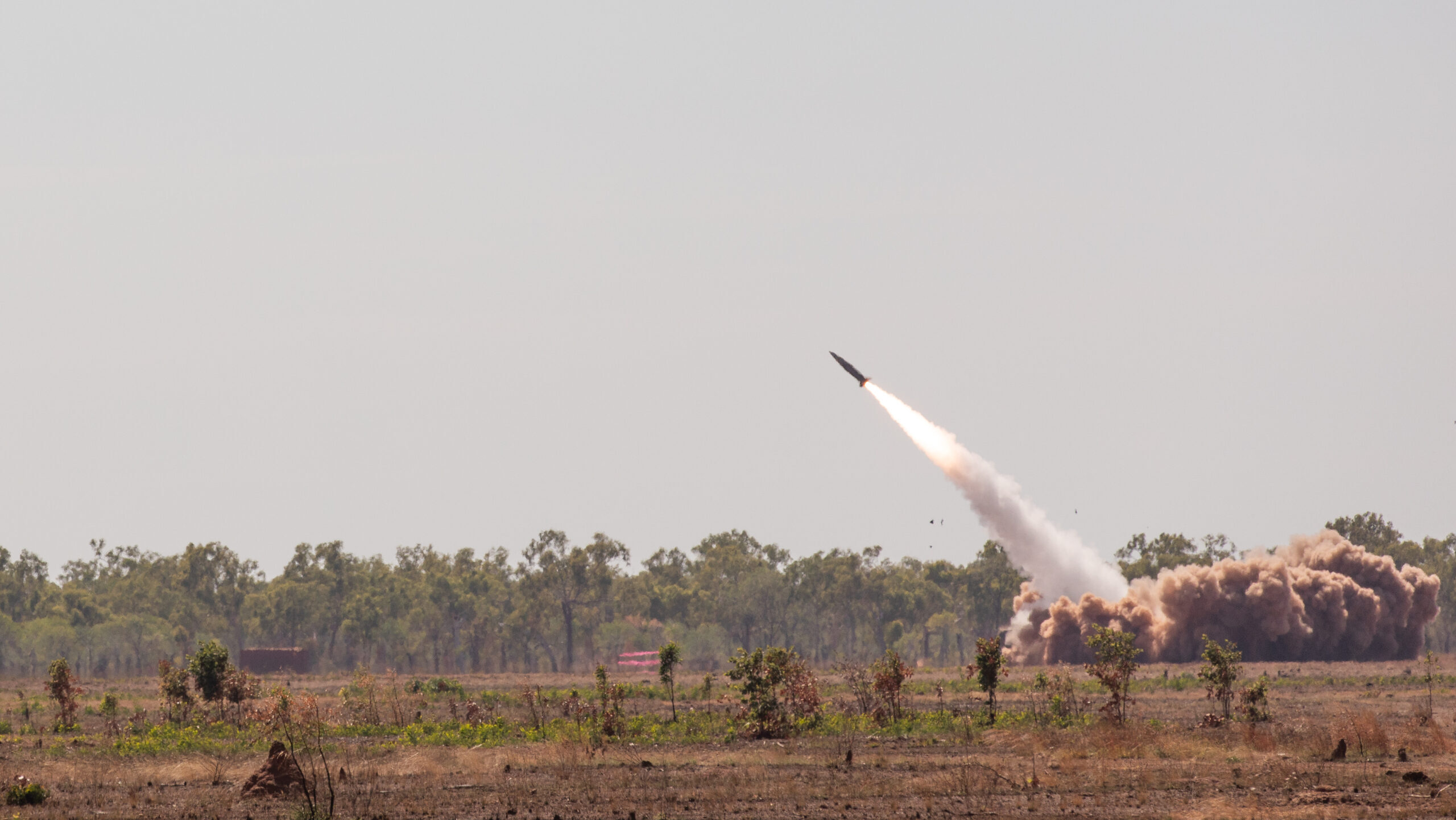
U.S. Soldiers from 1st Battalion, 3rd Field Artillery Regiment, 17th Field Artillery Brigade launch the Army Tactical Missile System (ATACMS) from the M142 High Mobility Artillery Rocket System (HIMARS) in Delamere, Northern Territory, Australia in support of Talisman Sabre 2023 on July 27, 2023. (U.S. Army photo by Sgt. 1st Class Andrew Dickson)
WASHINGTON — Just minutes after President Joe Biden signed a $95 billion military aid package for Ukraine, Israel and the Pacific into law, American forces began flowing materiel towards Ukraine. But one weapon, it turns out, is already in play: long range versions of the Army Tactical Missile Systems, or ATACMS.
The White House quietly shipped a “significant” number of ATACMS to Ukraine as part of a March arms package, and the systems are now operational inside the country, National Security Advisor Jake Sullivan said today. While the US had previously sent shorter-range versions of the weapon, these are the longer-range versions with a range of about 300 kilometers (186 miles), allowing for deep strikes behind Russian lines.
Sullivan, speaking at the White House podium, also noted that it is the White House’s belief that the $61 billion earmarked for Ukraine should be enough to support Kyiv’s resistance against Russia through the end of calendar 2024.
The long-range ATACMS agreement, first reported by Politico, is a system Ukraine has long sought. It now joins the British Storm Shadow and French SCALP missiles as deep-strike options for Ukraine. To this point, Germany has resisted sending its Taurus missiles, but the White House’s announcement today may lead to renewed pressure on Berlin over that decision.
Sullivan said the weapons could be used “inside Ukraine’s sovereign territory” — which the US has traditionally said includes Crimea, which Russia annexed in 2014 and contains a number of key Russian military bases and logistics centers.
“Until recently, as we’ve said, on many occasions, we were unable to provide these ATACMS because of readiness concerns” Sullivan said. “But behind the scenes, the administration across the board has worked relentlessly to address those concerns. We now have a significant number of ATACMS coming off their production line and entering US stocks. And as a result, we can move forward with providing the ATACMS while also sustaining the readiness of the US armed forces.”
More broadly, Sullivan hit at Congress for the holdup of funding for Ukraine, stating “The consequences of the delay have been felt in Ukraine. Over the past six months, Ukraine has had to ration ammunition, and that has resulted in the loss of some territory in the East … While today’s announcement is very good news for Ukraine, they are still under severe pressure on the battlefield and it is certainly possible that Russia could make additional tactical gains in the coming weeks.
“The fact is that it’s going to take some time for us to dig out of the hole that was created by six months of delay before Congress passed the supplemental.”
Speaking earlier in the day, Gen. CQ Brown, the Chairman of the Joint Chiefs of Staff, said the Pentagon has been laying the groundwork to send weapons to Ukraine as quickly as possible should the supplemental be passed.
“Well, as you as you might imagine, what we do in Department of Defense is plan,” Brown said at an event hosted by the Center for Strategic and International Studies. “We plan a lot. And we’re always trying to stay postured to stay ahead of any type of decision, and knowing the supplement has been something we’ve been focused on, this national defense bill was something we focused on, for a while.
“And seeing that we were getting closer and closer, particularly last week when the House passed [the bill], we were well postured with the authorities and the movement of munitions to Ukraine. So we’ve already been pretty far forward in a lot of area,” he said.
Marines eye 2025 fielding of 3 new, mobile air defense systems
“We are on track from a programmatic standpoint — cost, schedule performance — but we’re always gonna be late to need,” said Col. Andrew Konicki, the program manager for Ground Based Air Defense (GBAD). “The threat is ever changing and ever evolving.”


























